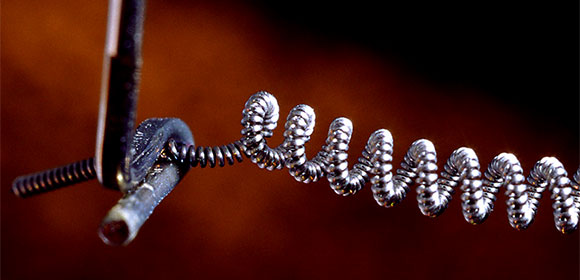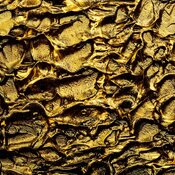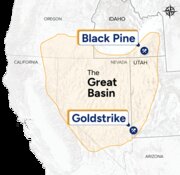The Gold Report: Europe plays a more dominant role in tungsten supply and pricing than the U.S. Is that likely to change in the near term?
Robert Baylis: China is the dominant player in the tungsten industry, but both Europe and North America have an impact on the market. Europe is probably more important when it comes to pricing because the main benchmark for the industry is APT, ammonium paratungstate, and one of the key reference points for pricing is the FOB EU APT quotation. Europe also has more diverse end users, whereas there are fewer players in North America.
"Carbine Tungsten Ltd. received $15M from Mitsubishi to finance a tungsten recovery operation."
Processing capacity outside China is mainly in North America and Europe. The major producers in the U.S., Global Tungsten & Powders Corp. (GTP), a division of Plansee SE, and Kennametal Inc. (KMT:NYSE), are significant players. In Europe, Wolfram Bergbau-und Hutten AG of Austria, a division of Sandvik, and H.C. Starck, a private firm, are the key participants. Russia is also an important supplier.
TGR: How did China become the world's dominant tungsten player?
RB: Prior to the 1980s most of the tungsten produced in China was used domestically and most of the tungsten processors, some of which we have already mentioned, were buying significant volumes of concentrate from a variety of mines around the world. Enter China. Chinese tungsten reserves are considerable and the cost in the 1980s to mine them was lower than at mines elsewhere. When China started exporting tungsten concentrate to Western processors in the early 1980s, a lot of the existing tungsten mines shut down owing to price competition. In the early 2000s, China implemented export quotas to prevent tungsten concentrate from going to foreign processors in order to develop its domestic processing industry and move beyond being a raw materials supplier. Today China is the largest producer both of tungsten concentrate and intermediate products.
"Largo Resources Ltd.'s Northern Dancer is one of three major tungsten projects in the Yukon."
China's export quota went into effect in the early 2000s when the market was at its strongest and that put some pressure on supply. As such, tungsten processors in the rest of the world turned to recycling tungsten and other sources of supply. The result is that Western processors have diversified their supply chain and are now less reliant on China.
TGR: Reuters reports that China is expected to remove export quotas for tungsten and molybdenum in 2015, which could obviously lead to more tungsten and molybdenum coming to market. Please tell us about the potential impact of China's decision to remove those quotas.
RB: Under a recent World Trade Organization decision, China was told that it must remove its tungsten export quotas. And while that could have some impact, there is no longer significant reliance on Chinese exports. Had this happened in, say, 2007, the impact would have been stronger.
The impact will be on pricing, because the Chinese export quota also restricted the number of suppliers to the rest of the world. If that restriction were relaxed, the Chinese domestic APT price and the EU APT price would perhaps normalize because domestic prices in China are lower than those in the rest of the world. There may be a small drop in price in 2015, but there won't be a large drop as Chinese mines are no longer so low cost. EU APT is the main benchmark for the rest of the world. In China, companies like China Minmetals Corp. (CMIN:CH) and the Ganzhou Tungsten Association (GTA) publish tungsten guiding prices for concentrate and APT. That's a good indication of the domestic price for tungsten in China.
TGR: What's the difference between APT and ferro-tungsten? Why does one garner a lot less money than the other?
RB: Ferro-tungsten is used mainly to produce harder-wearing steels for tools and the like. Like any ferro alloy, the iron content helps it bond with steel. APT isn't used very much as a product. It's an intermediate. It will become tungsten powder and get used in many different applications. Most of the trading starts at the point of producing APT. Also, APT is a relatively consistent product globally, so it's easy to set a benchmark for, whereas concentrate can vary considerably in terms of tungsten content and deleterious elements.
TGR: What investable themes should investors expect in the tungsten space over the medium term?
RB: The industry for tungsten is driven by macro-level growth. Automotive, machining and electronics are the main industries using tungsten. In the short or medium term it's unlikely that we'll see any rapid increase in demand. On the supply side, the key thing to look at is the cost position of China versus the rest of the world. China is no longer as competitive on tungsten mining costs. That means that producers elsewhere could enter the supply chain and compete with existing producers, even mines in China. Look at companies that are well supported, have offtake or can get offtake contracts with processors, and that have low operating costs.
What is the sweet spot for that group? It's difficult to finance mining projects and few capital intensive projects will get financing. The sweet spot is probably those projects that are around or less than $100 million ($100M) in capital expenditures (capex) and with all-in operating costs (opex) less than $250 per metric tonne unit ($250/Mtu) of APT equivalent.
TGR: What's your current price forecast for EU APT for 2015 and 2016?
RB: We believe that tungsten prices will remain stable in 2015. If the removal of the Chinese export quota brings more clarity between EU APT and Chinese domestic prices, then the EU APT prices could fall a little. EU APT has fallen under $350/Mtu but is unlikely to fall below $300/Mtu in the next year or two.
TGR: How would that compare with recent years?
RB: The peak was in 2011 when the average price was about $425/Mtu. Even as demand was increasing sharply in the mid-to-late 2000s, prices were only around $250/Mtu. The current highs are above the peak for most commodities, which came around 2007–2008.
TGR: The strongest year of the last seven was 2011, with about 95,000 tonnes of tungsten consumed. How long before we rise above that number?
RB: Maybe next year. It may take another couple of years to exceed 95,000 tonnes but we're not seeing anything exciting on the growth front.
TGR: A large amount of the supply comes from recycling. Is that putting a lag on pricing?
RB: The use of scrap is already high, especially in North America and Europe, and has probably been built into current pricing. Scrap is unlikely to have a significant impact on prices going forward.
TGR: China's Fanya Metal Exchange has been an active tungsten buyer this year. Do you expect that to continue? What will the net effect be?
RB: Tungsten stocks have been growing quite quickly over the last couple of years; somewhere close to 20% of the total market is stock on Fanya. These suppliers can get 80% cash for delivery onto the exchange whether that material is used or not. It's a win-win for producers, a bit like the London Metals Exchange (LME). The difference is that unlike the LME, Fanya stock levels haven't had a big impact on price. Most metals on Fanya, certainly the rare metals on the exchange, have increased in price because it is an investor-driven market. I'm not sure that tungsten is as investable as other metals on Fanya like indium or gallium or bismuth. The tungsten market is much larger and lower priced.
TGR: How is Fanya different from the LME?
RB: The idea behind an exchange is that it provides more transparency into a market. Then firms can start setting up hedging and effectively derisk their supply chain. Fanya is a little bit different. Fanya doesn't have a large amount of liquidity like the LME, so there isn't a lot of material going in and out of the warehouse. It's more akin to precious metals on the purchasing side, but, instead of gold, investors are buying indium or other rare metals that may have an attractive growth outlook. Much of the consumption is normal people buying small volumes of metal as an investment. That's driving demand.
TGR: Doesn't that ultimately bode well for tungsten given that investors are buying with the aim of making a profit?
RB: Possibly, but the industrial consumer isn't going to be supportive of rising prices. If the Fanya exchange causes tungsten prices to rise, as has happened with some other metals, you will probably see less business happen in the tungsten market between suppliers and end users. It might have a negative effect.
TGR: You recently produced a report called "Tungsten Market Outlook 2014." What about the market stood out as you put the numbers together?
RB: The main picture is one that is echoed in other commodities. Much of the perceived demand growth shortly after the global economic downturn, say from 2010 through 2012, wasn't actually consumed. It was mostly restocking. Rather than a significant increase in consumption, there was a rebound in demand. A lot of companies geared up into what they thought was fast demand growth, but actually demand growth has been quite slow. Since 2012 or so there has been a decline in demand as companies use up the material that they stockpiled. Supply has overshot consumption.
TGR: But that is slowly changing.
RB: Yes, the market is balancing out. Going forward we will see better balance in the tungsten market. We are now seeing steadier growth in consumption and suppliers are gearing up for a steadier growth outlook.
TGR: So the slow, steady climb has once again begun and a number of tungsten projects are waiting for financing in a difficult market. The ideal path is to have an offtake partner with deep pockets. Are there some examples?
RB: The most successful project of recent years has been Wolf Minerals Ltd.'s (WLF:ASX) Hemerdon tungsten mine in the U.K., where 80% of production over at least five years will be sold to offtake partners GTP and Wolfram Bergbau. Both are major processors, and connected to carbide tool manufacturers (Plansee and Sandvik). Hemerdon is a brownfield site that was operated both before and after the Second World War.
The main reason the project got the green light is that the supply of tungsten from the U.S. defense national stockpile will run out this year. The stockpile has been providing some 2,000 tons of tungsten concentrate to the global market for about 10 years. GTP and Wolfram Bergbau needed an alternative and Hemerdon was the most advanced project, and the necessary capex wasn't a huge obstacle. Of course, the offtake agreements helped enormously. Now the question is: how much more material do they need? There is plenty of concentrate supply out there. That's the problem for any company trying to develop a project. How do you fit your product into a market that is already well supplied?
TGR: What are other ways tungsten projects get financing?
RB: From time to time larger trading companies will invest into mining projects to secure supply, but they may not have a guaranteed offtake. They may sell it in the open market. Another path now is private equity. Private equity is becoming more important in mining and with better commodity expertise private equity is likely better positioned to determine a good project from an average one. But even private equity is unlikely to put money into a project without a buyer for the material.
TGR: Are there other companies that are financing through offtake agreements?
RB: Carbine Tungsten Ltd. (CNQ:ASX), a smaller producer, received money from Mitsubishi Corp. in Japan to finance a tungsten recovery operation in exchange for a guaranteed supply of tungsten. The processors help get some projects started.
TGR: Will Carbine need further financing?
RB: The company is producing tungsten from stockpile and tailings material. It has 12 million tons (12 Mt) of stockpiled material and it has received $15M from Mitsubishi to process it.
TGR: What is the production timeline for its Mt. Carbine tungsten project in Australia?
RB: It could be brought on-line fairly quickly, but the company needs to secure the necessary financing to develop it. That may come depending on the success it has with processing stockpiles and the money that generates. Mitsubishi won't put up a lot of money to invest in a large-scale mine when it doesn't need the material. Mitsubishi relies on China and the rest of the world for intermediate products but that could change. If Japanese companies see the potential to be more competitive through processing tungsten concentrate, then those companies may look to fund more tungsten operations.
TGR: Your report discusses three clusters of tungsten projects. Category No. 1: Large, high-capex, low-opex, low-grade. Category No. 2: Midsize, low-capex, low/medium-opex, midgrade. Category No. 3: Midsize, low-capex, high-opex, mid- to high-grade. Can you rank those for us?
RB: The medium-capex, medium-opex, relatively high-grade deposits are the ones that stand out. That's the sweet spot for tungsten projects. The projects that have advanced the quickest and achieved the most success are those in that range.
Those with high-opex or high-capex or both present challenges. If you're prepared to take a lot of risk on a big mine that may produce a lot of material, then you could be successful—but prices have to stay high. When the price is high you can develop almost anything. You ought to look at the projects that can compete with existing producers at the lower end of the cost curve because that's going to lower risk.
The other issue is that the large-capex projects will produce a lot of tungsten. Where is that material going? There are only five or six processors outside China. Who are you going to sell it to? That material will be more than one supplier can handle in a year. That's what has happened in iron ore. Rio Tinto Plc (RIO:NYSE; RIO:ASX; RIO:LSE; RTPPF:OTCPK), Vale S.A. (VALE:NYSE) and BHP Billiton Ltd. (NYSE:BHP; OTCPK:BHPLF) have invested in low-opex operations that can weather the price downturn. They gain market share as the price comes down and others go out of business. In less transparent commodities in much smaller industries, it doesn't work that way. It's not going to work in tungsten.
TGR: Who is the Goliath in the tungsten market?
RB: Outside of China really it's North American Tungsten Corp. Ltd. (NTC:TSX.V)—it is the biggest producer outside China and it has a relatively small market cap because it hasn't been that profitable and its costs are high. In tungsten most of the mines are privately owned. Many public companies are developing tungsten projects but the operating side is mostly private.
TGR: What are some development-stage projects with preliminary economic assessments or feasibility studies that suggest the opex costs would be in that $250/Mtu range?
RB: The most advanced is Ormonde Mining Plc's (ORM:LSE) Barruecopardo tungsten project in Spain. The feasibility-level opex at Barruecopardo is around $130/Mtu. The company recently secured a mining permit. It's a relatively low-opex, low-capex, medium-grade, medium-output project similar to Hemerdon. Ormonde has an offtake agreement with a trading company, Noble Group, but needs someone to put up the capital for development.
TGR: Will Ormonde get the money?
RB: It's certainly possible. Ormonde could be competitive at that operating cost range. It's a question of where the tungsten concentrate will end up. There's a limited number of tungsten buyers. Having an offtake agreement doesn't necessarily mean it will be able to sell to processors at a profit. China imports some tungsten concentrates. If the concentrate is good quality and low cost, it could find a market there. If it were to go to a Western processor, then it's probably going to have to displace material from an existing operation. That's going to be harder to achieve.
TGR: Are there others that are in that cost range?
RB: Wolf Minerals' Hemerdon is in that range. Carbine Tungsten is in a similar bracket with Ormonde's Barruecopardo in terms of capex and opex.
TGR: What's the biggest challenge facing these companies?
RB: Securing a customer is probably the biggest challenge. If we look at rare earth elements, for example, Molycorp Inc. (MCP:NYSE) and Lynas Corp. (LYC:ASX) are great operations, but they struggle to sell the material that they produce because the market isn't big enough. They must displace existing suppliers. If you can't sell into China, you have limited options on where else to sell. The tungsten market provides more options as Europe, North America and Japan still have a large share, but supply and demand is still dominated by China.
TGR: Who is likely first past the post?
RB: Barruecopardo should be next; it's the most advanced. Ormonde just needs to find the money to develop it. That's probably the leader in development-stage tungsten projects. Another one that is well advanced is Northcliff Resources Ltd.'s (NCF:TSX) Sisson tungsten-molybdenum project in New Brunswick, Canada. The advantage is that unlike most other project developers, Northcliff is backed by the Hunter-Dickinson Group, so it has the experience and resources to continue development.
TGR: On the opposite side of Canada in the Yukon there are three major tungsten projects. Do those fit into the cost curve?
RB: The two big ones there are similar to Sisson. Those are Largo Resources Ltd.'s (LGO:TSX.V) Northern Dancer and North American Tungsten's Mactung project. Both are good projects. Mactung in particular is very high grade. The issue with Mactung is that infrastructure is limited. It also is capital intensive.
Largo's Northern Dancer is less remote but the capital costs are even higher than at Mactung. Largo has a tungsten asset in Brazil that is on care and maintenance because of a severe drought. Largo is concentrating on its vanadium assets in Brazil and would probably bring the tungsten operation in Brazil back into production before it starts any further development on Northern Dancer.
TGR: What are some things to watch for in 2015?
RB: Watch for the impact of the loss of the Chinese export quotas. China may replace the quota with other domestic policy. For example, it could impose a more stringent mining quota on domestic operations or increase the resource tax to limit the loss of upstream concentrate to processors outside China. In tungsten scrap use, there will likely be some growth but that is getting close to peak use. Of course, some new supply will enter the market once Hemerdon enters production late next year.
TGR: Do you have some final thoughts on the tungsten market heading into 2015?
RB: It's probably going to be similar to 2014. You'll see a largely balanced market with steady pricing. Prices may fluctuate in the short term on different factors, but it's unlikely to be much different from this year.
TGR: Thank you for talking with us today, Robert.
 Robert Baylis is managing director of Roskill Information Services Ltd., which is based in London and provides research and consultancy on industrial mineral, minor metal and steel alloy markets. Baylis joined Roskill in 2006 focusing initially on the cobalt market. He first started researching the tungsten market in 2011, co-authoring and editing Roskill's 11th edition of its multi-client tungsten report published in 2014. Since 2011, he has also undertaken several single-client research projects on tungsten, as well as advancing Roskill's tungsten research, specifically on secondary production, Chinese domestic production and production costs.
Robert Baylis is managing director of Roskill Information Services Ltd., which is based in London and provides research and consultancy on industrial mineral, minor metal and steel alloy markets. Baylis joined Roskill in 2006 focusing initially on the cobalt market. He first started researching the tungsten market in 2011, co-authoring and editing Roskill's 11th edition of its multi-client tungsten report published in 2014. Since 2011, he has also undertaken several single-client research projects on tungsten, as well as advancing Roskill's tungsten research, specifically on secondary production, Chinese domestic production and production costs.
Read what other experts are saying about:
Want to read more Gold Report interviews like this? Sign up for our free e-newsletter, and you'll learn when new articles have been published. To see a list of recent interviews with industry analysts and commentators, visit our Streetwise Interviews page.
DISCLOSURE:
1) Brian Sylvester conducted this interview for Streetwise Reports LLC, publisher of The Gold Report, The Energy Report, The Life Sciences Report and The Mining Report, and provides services to Streetwise Reports as an independent contractor. He owns, or his family owns, shares of the following companies mentioned in this interview: None.
2) The following companies mentioned in the interview are sponsors of Streetwise Reports: Carbine Tungsten Ltd. and Largo Resources Ltd. The companies mentioned in this interview were not involved in any aspect of the interview preparation or post-interview editing so the expert could speak independently about the sector. Streetwise Reports does not accept stock in exchange for its services.
3) Robert Baylis: I own, or my family owns, shares of the following companies mentioned in this interview: None. I personally am, or my family is, paid by the following companies mentioned in this interview: None. My company has a financial relationship with the following companies mentioned in this interview: None. I was not paid by Streetwise Reports for participating in this interview. Comments and opinions expressed are my own comments and opinions. I determined and had final say over which companies would be included in the interview based on my research, understanding of the sector and interview theme. I had the opportunity to review the interview for accuracy as of the date of the interview and am responsible for the content of the interview.
4) Interviews are edited for clarity. Streetwise Reports does not make editorial comments or change experts' statements without their consent.
5) The interview does not constitute investment advice. Each reader is encouraged to consult with his or her individual financial professional and any action a reader takes as a result of information presented here is his or her own responsibility. By opening this page, each reader accepts and agrees to Streetwise Reports' terms of use and full legal disclaimer.
6) From time to time, Streetwise Reports LLC and its directors, officers, employees or members of their families, as well as persons interviewed for articles and interviews on the site, may have a long or short position in securities mentioned. Directors, officers, employees or members of their families are prohibited from making purchases and/or sales of those securities in the open market or otherwise during the up-to-four-week interval from the time of the interview until after it publishes.










































